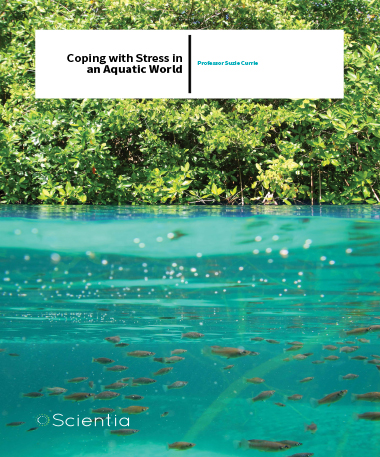Professor Suzie Currie – Coping With Stress In An Aquatic World
As high temperatures continue to set records around the globe, aquatic organisms are facing new environmental extremes. Freshwater and marine animals will either adapt to resulting changes in salinity, temperature and oxygen, or face mortality and possible extinction. Scientists such as Professor Suzie Currie are investigating the inherent plasticity – or flexibility – of fish to cope with stressful conditions. She and her team at Mount Allison University in Canada are discovering that both physiological and social strategies may affect how fish cope with their new environmental realities.
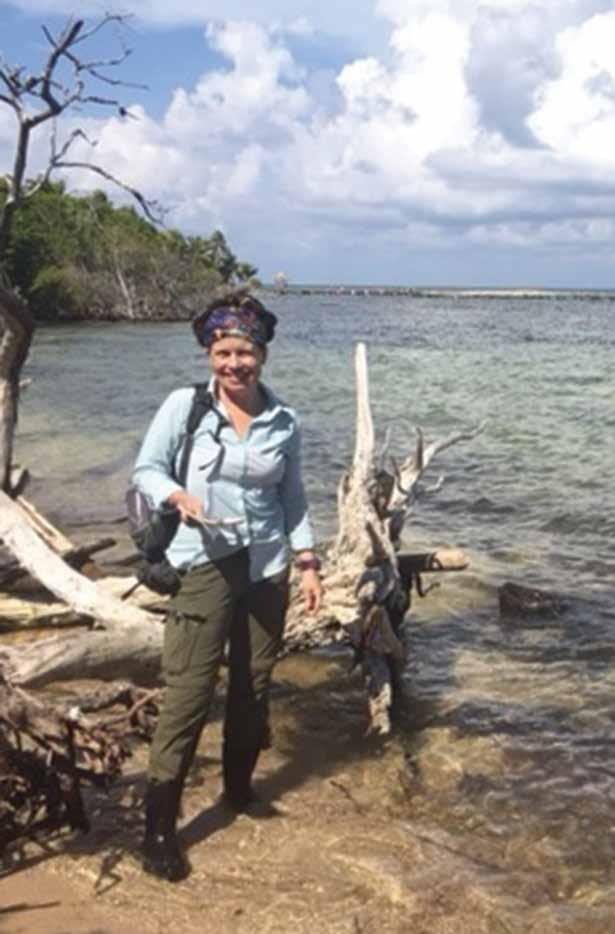
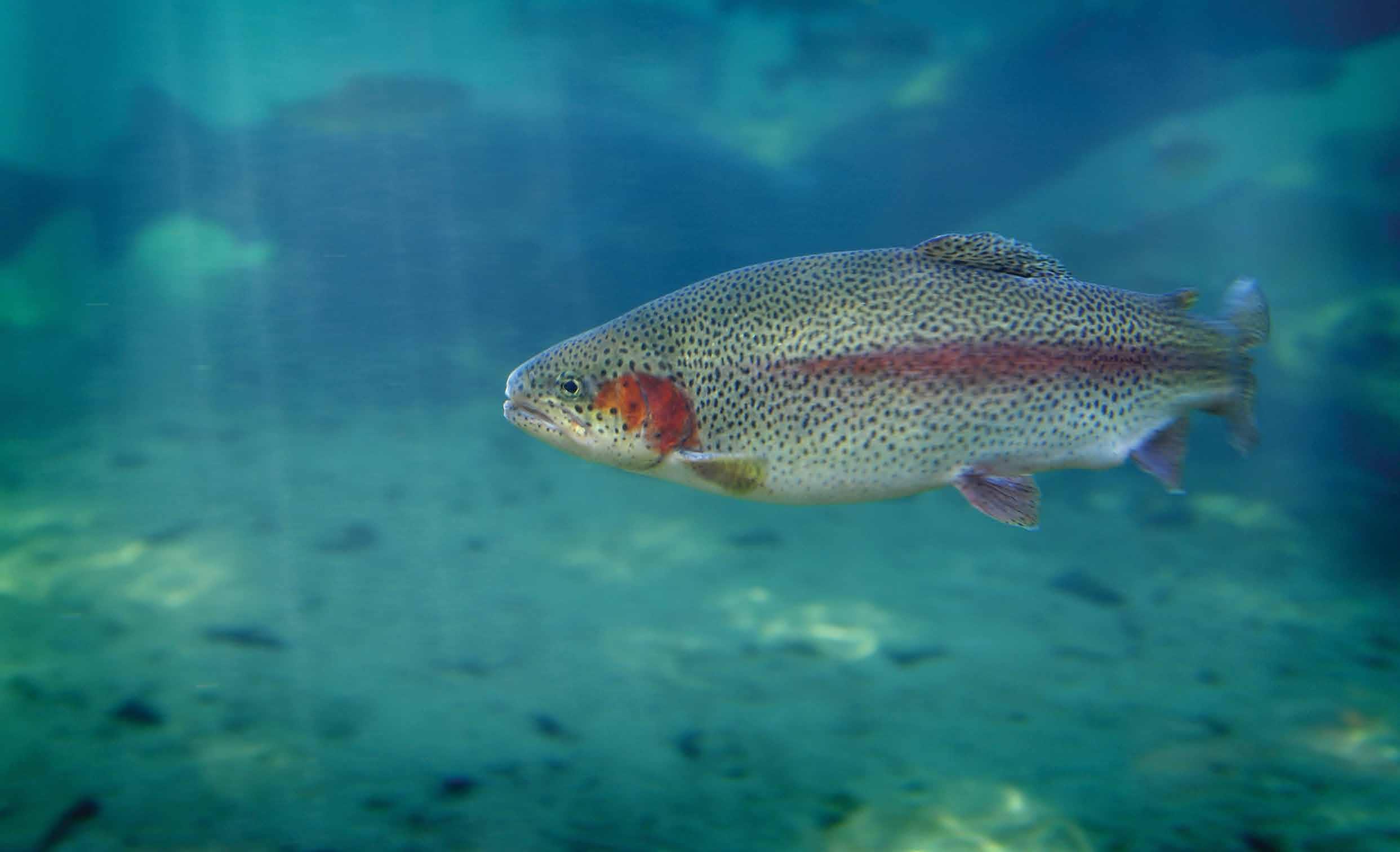
Estuaries – Models of Extreme Conditions
Professor Suzie Currie’s interest in how fish species will fair with climate change began in her undergraduate student years. ‘I became interested in how animals function, particularly in extreme or stressful environments,’ she explains. ‘Having grown up on the east coast of Canada, I am also very drawn to the water, so it made sense for me to combine my love of the ocean with my interest in animal function and use fish as a model to understand how environmental change affects animal functioning.’
One ideal place to study how fish already function in environmental extremes is an estuary. Estuaries are enclosed bodies of water that have a connection to the ocean and receive freshwater flow. As such, these bodies of water can vary in salinity ranging from little or no measurable salt content (such as freshwater) to that found in sea water (35 parts of salt per thousand parts of water), or even higher.
Many estuarine fish are somewhat adapted to slight variations in salinity, but extreme events associated with climate change might pose another problem. For example, heavy rainfall or prolonged drought can more rapidly and radically alter an estuary’s salinity, perhaps beyond the limitations of its inhabitants. Therefore, a key question for Professor Currie and her research group at Mount Allison University is how flexible – or plastic – fish already are in responding to these types of events. In two 2016 studies, Professor Currie’s team collaborated with Dr Jayson Semmens of the Institute for Marine and Antarctic Studies in Australia to work out how low salt (hyposaline) and high salt (hypersaline) conditions affect two different shark species. Their study targets were gummy sharks (Mustelus antarcticus) and school sharks (Galeorhinus galeus), which both use the Pittwater Estuary located in southeast Tasmania, Australia. Like many estuaries, the Pittwater is an important refuge and nursery for many kinds of sharks and fish because it is shallow, full of food and protected.
Depending on the weather and how much freshwater and seawater flows in, the Pittwater experiences large fluctuations in salinity. During wetter summers, increased rainfall dilutes the estuary and causes hyposalinity, dropping concentrations to 25.5–28 parts per thousand. Conversely, dry summers increase evaporation in the Pittwater and cause hypersalinity, reaching between 40 and 47 parts per thousand. Previous studies suggested that sharks migrate in or out depending on wet or dry summer conditions.
The researchers aimed to replicate these dilute or concentrated-like conditions in a controlled laboratory setting. They took juvenile gummy and school sharks from the wild and let them acclimatise in large outdoor seawater tanks. They then subjected them to both low and high salinity levels for 48 hours. Blood and tissues were then analysed for all sorts of physiological parameters, including red blood cell counts, haemoglobin, electrolytes, proteins, ubiquitin, osmolytes and oxygen consumption, among others indicators of stress. During low salinity conditions – also known as hyposmotic events – the researchers found that gummy sharks did not fare as well as school sharks. Likewise, hypersaline conditions generally caused more stress in gummy sharks.
Evolutionary adaptation has probably made the school shark more resistant to changing salinities. The physiological differences between the two sharks explain why the gummy shark is less numerous in Pittwater Estuary, especially after heavy rainfall or dry spells. ‘We have shown that these changes in salinity result in species-specific physiological stress and our work provides physiological correlates to the observed distribution patterns and movement of shark species in their critical nursery grounds,’ Professor Currie tells us.
‘The long-term objective of my research program is to understand the feedback between physiological and behavioural responses allowing animals to compensate and maintain function in changing, often stressful environments’
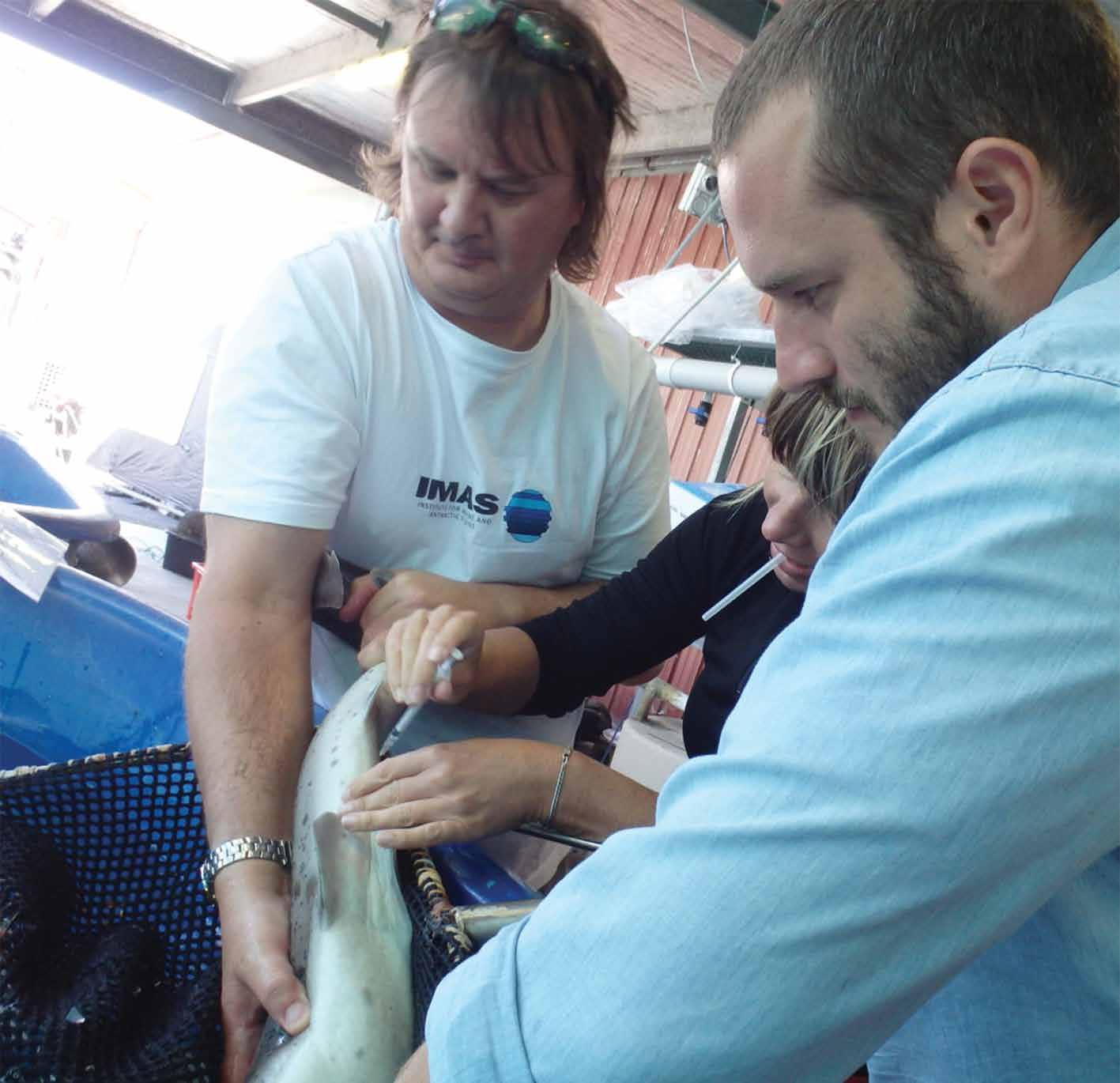
Rising Temperatures in Salmon Rivers
Along with sharks, Professor Currie’s group is also looking at how extreme weather might affect Atlantic salmon (Salmo salar). The number of these salmon returning to spawn in the Miramichi River in eastern Canada is dropping to all time historic lows. The trend is alarming, since more than 20% of the total North American population of these fish come from there. High water temperatures appear to be the cause. ‘Thermal stress is a major concern for Atlantic salmon populations, with mortalities observed after several days of high summer temperatures,’ explains Professor Currie. Ideally, water temperature for Atlantic salmon should be between 6–20°C. In the summers of 2014 and 2015, however, temperatures in the Miramichi averaged 21°C, with some peak temperatures recorded as high as 27°C.
The suspicious culprit is likely changing climate, says Professor Currie: ‘High temperatures and low water levels associated with climate change are hypothesised to be key contributing factors in this decline. In addition, temperature changes are frequently quite rapid, allowing little time for fish to acclimatise or recover from such stressful conditions.’
Professor Currie explains that as of now, ‘many of the physiological and cellular mechanisms underlying thermal stress in Atlantic salmon are poorly understood.’ Previous laboratory studies tended to focus on the effects of constant, and not fluctuating, temperatures on salmon health. However, in the Miramichi River, as in most aquatic environments, temperatures rise and fall on a daily basis. Does this natural diel cycle physiologically harden salmon for stress? Does it afford them more plasticity to adapt to higher temperatures?
To find out, Professor Currie, her collaborator, Dr Tyson MacCormack and their graduate student, Louise Tunnah, set out to replicate more real-world conditions in their laboratory design. After acclimatising young Miramichi salmon in large tanks, they subjected them to daily temperature fluctuations common on the river. After three days, they exposed the salmon to thermal shock. To evaluate stress, they measured parameters such as oxygen consumption, metabolic rate, blood cell counts and protein damage in the young salmon.
They found that salmon that had undergone the daily temperature changes were not hardened to stress. On the contrary, these salmon had notable physiological and cellular responses to fluctuating temperatures. ‘We have been using real-world field data to replicate these thermal conditions in the lab, subjecting salmon to natural diel warming cycles. Notably, most studies that investigate the effects of temperature on animals acclimate animals to a constant temperature. Our data indicate that thermal cycling significantly affects several physiological responses,’ Professor Currie summarises.

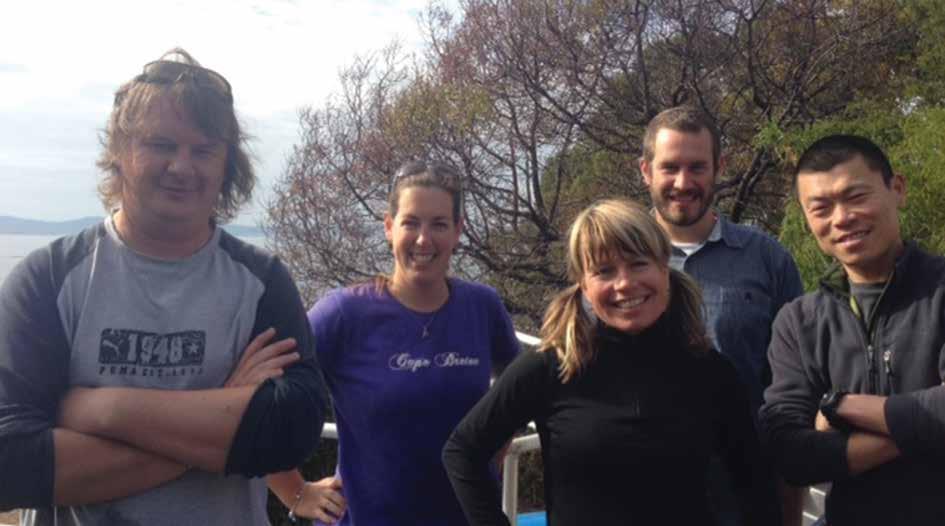
Better Together
The team’s shark and salmon studies demonstrate that changes in physical parameters such as salinity and temperature cause stress at the physiological and cellular levels. But Professor Currie is also delving into how other features such as social environment play a role. ‘My students and I study a variety of fish species (for example, salmon, trout, tropical mangrove fish, sharks) and determine if they are negatively affected by realistic environmental change,’ she tells Scientia. ‘We also ask whether or not the social environment (for example, isolation, pairs, and groups) influences how they respond to their environment.’
As an example, Professor Currie points to social behaviour of rainbow trout (Oncorhynchus mykiss) and their responses to thermal stress. When resources become limited in the wild, juvenile rainbow trout are known to form social hierarchies whereby some fish dominate food and shelter over weaker fish.
Since trout behave similarly in laboratory tanks, Professor Currie along with her colleagues and then graduate student, Sacha LeBlanc, were able to conduct controlled experiments on how these already socially stressed fish respond to increases in water temperatures. After applying thermal stress, the researchers measured the amount of stress hormone and heat shock proteins in tissue and blood samples of both dominant and subordinate fish. Their studies found that subordinate trout were significantly less tolerant of heat. Specifically, thermal stress induced higher levels of heat shock proteins (HSPs) in the weaker fish, suggesting that social environment is having an effect on fish at a cellular level. However, the mechanism by which this is happening is unknown. ‘This is a gap in our knowledge and one we are currently pursuing,’ explains Professor Currie. ‘Key to this research theme is the ability to distinguish the influences of genetic and environmental variability and the interaction between the two.’
To further understand environmental plasticity, the team is looking at the mangrove rivulus (Kryptolebias marmoratus), a fish found in mangroves in and around the Caribbean and Central America. The fact that this fish is an air breather suggests that it has evolved to live in extreme and variable conditions. The rivulus is also the only known vertebrate hermaphrodite, meaning it has both male and female traits and essentially produces ‘clones’ of itself. As such, the genetic uniformity of rivulus makes it an ideal model. ‘We can use this fish to isolate genetics and examine contributions of environmental variation on behavioural and physiological traits,’ says Professor Currie. ‘We are using mangrove rivulus to understand the flexibility or plasticity of traits involved in thermal and salinity tolerance and how changes in fish behaviour may impact the responses to environmental stress.’
Even though rivulus fish can reproduce on their own, it looks like they might be better off when they have other rivulus around to stay healthy, especially in extreme conditions. Professor Currie’s preliminary data suggests that when they become socially isolated, rivulus fail to produce heat shock proteins that protect their cells from being damaged by thermal stress. As it turns out, social living is a plus.
The team has extended their research with rainbow trout and mangrove rivulus to Atlantic salmon. They are currently studying whether its schooling behaviour affects their metabolism and swimming.
Intersection of Physiological and Social Worlds
Professor Currie emphasises that scientists need to consider both social aspects and biological responses when understanding how an animal might cope with climate change. She tells Scientia: ‘Our work has broad physiological significance as well as enhancing our understanding of fish stress biology. Understanding where the social and physical environments intersect is important in understanding how animals cope with stress and what conditions make animals more susceptible to stress.’
She believes fish are useful models to make these connections. By identifying and studying their stress-coping strategies, we ‘may uncover unique and effective mechanisms used by fish in their natural environment that may inform physiological studies on mammals and humans,’ she says. Also, identifying their vulnerabilities to climate change will help decisions on how to manage or restore their habitats.
Professor Currie’s group will pursue studies on the social-physical environment ‘intersection’ by conducting further experiments in both laboratory and field settings. ‘My programme will also continue to focus on the importance of ecologically realistic environments in studying physiological responses of animals,’ she adds.
Meet the researcher
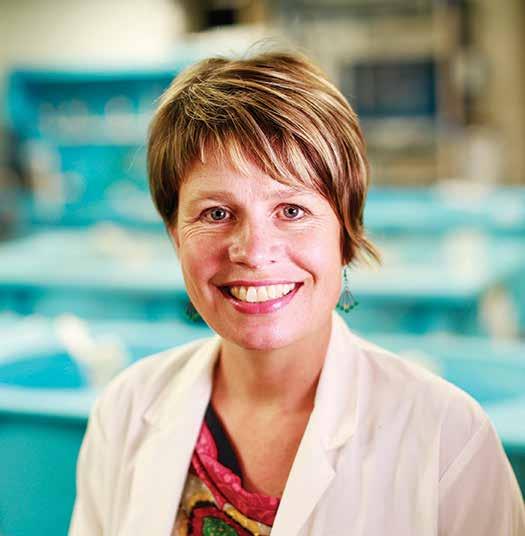
Professor Suzie Currie
Department of Biology
Mount Allison University
Sackville, Canada
Professor Suzie Currie is a comparative animal physiologist and professor at Mount Allison University in New Brunswick, Canada, where she also currently heads the Department of Biology. She received her BSc in Honours Biology at Acadia University in Nova Scotia and then completed a MSc in 1993 and PhD in 1997, both in Biology from Queen’s University in Ontario. She conducted postdoctoral research until 2000 at the Department of Zoology at Cambridge University, where she was the Charles and Katherine Darwin Research Fellow at Darwin College. Professor Currie teaches and advises many undergraduates and graduates in biology and animal physiology. Her research focuses on understanding the behavioural and physiological responses of animals in changing environments.
CONTACT
T: (+1) 506 364 2260
W: https://www.mta.ca/community/bios/suzie_currie/suzie_currie/
KEY COLLABORATORS
Dr Jayson Semmens, University of Tasmania, Australia
Dr Andrea Morash, Mount Allison University, Canada
Dr Tyson MacCormack, Mount Allison University, Canada
Dr Kathleen Gilmour, University of Ottawa, Canada
Dr Patricia Wright, University of Guelph, Canada
FUNDING
Natural Sciences and Engineering Research Council of Canada (NSERC)
New Brunswick Innovation Foundation (NBIF)
Canada Foundation for Innovation (CFI)
New Brunswick Environmental Trust
REFERENCES
L Tunnah, SRC MacKellar, DA Barnett, TJ MacCormack, KM Stehfest, AJ Morash, JM Semmens and S Currie, Physiological responses to hypersalinity correspond to nursery ground usage in two inshore shark species (Mustelus antarcticus and Galeorhinus galeus), Journal of Experimental Biology, 2016, 219, 2028–2038.
AJ Morash, SRC Mackellar, L Tunnah, DA Barnett, KM Stehfest, JM Semmens and S Currie, Pass the salt: physiological consequences of ecologically relevant hyposmotic exposure in juvenile gummy sharks (Mustelus antarcticus) and school sharks (Galeorhinus galeus), Conservation Physiology, 2016, 4, cow036.
RP French, J Lyle, S Tracey, S Currie and JM Semmens, High survivorship after catch-and-release fishing suggests physiological resilience in the endothermic shortfin mako shark (Isurus oxyrinchus), Conservation Physiology, 2015, 3, cov044.
S LeBlanc, S Middleton, KM Gilmour and S Currie, Chronic social stress impairs thermal tolerance in the rainbow trout (Oncorhynchus mykiss), The Journal of Experimental Biology, 2011, 214, 1721–1731.
S Currie, S LeBlanc, MA Watters and KM Gilmour, Agonistic encounters and cellular angst: social interactions induce heat shock proteins in juvenile salmonid fish, Proc. R. Soc. B, 2010, 277, 905–913.
S Currie, S LeBlanc, MA Watters and KM Gilmour, Agonistic encounters and cellular angst: social interactions induce heat shock proteins in juvenile salmonid fish, Proceedings of the Royal Society B, 2010, 277, 905–913.


